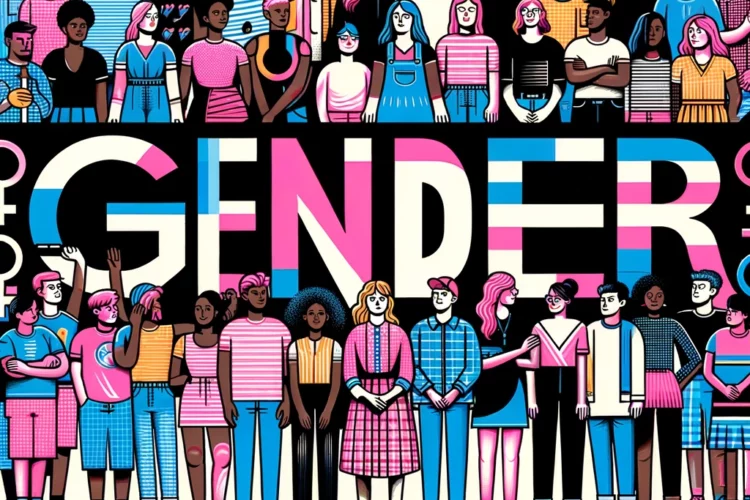Central Themes of Third-Wave Feminism
Chandra Talpade Mohanty's essay "Under Western Eyes Revisited" is a critical examination of feminist scholarship, particularly how Western feminists represent women from the Global South. Mohanty's work is central to third-wave feminism, which emphasizes intersectionality, diversity, and the importance of context in feminist discourse.
## Central Themes of Third-Wave Feminism
1. **Critique of Universalism**: Mohanty challenges the tendency of Western feminists to portray "Third World women" as a homogeneous group defined solely by their oppression. This universalizing approach ignores the diverse experiences and cultural contexts of women across different regions. Mohanty argues that such representations reduce complex identities to simplistic stereotypes, often depicting these women as passive victims in need of rescue by Western feminists.
2. **Intersectionality**: Mohanty emphasizes the need to consider multiple axes of identity—including race, class, nationality, and sexuality—when analyzing women's experiences. This intersectional approach recognizes that women's oppression is not monolithic; rather, it is shaped by various social, political, and economic factors that differ across cultures and contexts.
3. **Political Contextualization**: Mohanty advocates for feminist scholarship that is historically and geographically specific. She argues that understanding the local realities of women's lives is crucial for effective feminist activism and solidarity. This means moving beyond abstract theories to engage with the lived experiences of women in different cultural settings.
4. **Solidarity and Coalition Building**: Mohanty calls for building coalitions among women across national and cultural boundaries while respecting their differences. She emphasizes that solidarity should be based on mutual understanding and respect for diverse experiences rather than a paternalistic approach that seeks to "save" marginalized women.
5. **Critique of Western Feminist Practices**: Mohanty critiques the ways in which Western feminist scholarship can perpetuate colonial attitudes by positioning Western women as the subjects and Third World women as objects of study. This dynamic reinforces existing power hierarchies and undermines genuine solidarity among women globally.
## Critique of Western Feminist Approaches
Mohanty's critique of Western feminist approaches centers on several key arguments:
- **Colonial Discourse**: She argues that Western feminist narratives often reflect colonial attitudes by framing Third World women as backward or traditional while positioning Western women as modern and liberated. This binary reinforces a colonial mindset that perpetuates power imbalances between the Global North and South.
- **Reductionism**: By generalizing the experiences of Third World women, Western feminists risk overlooking the complexities of their lives. Mohanty contends that this reductionist view strips these women of agency and fails to account for their struggles against various forms of oppression that are not solely gender-based.
- **Methodological Issues**: Mohanty critiques the methodologies employed by many Western feminists, which often lack specificity regarding local cultural contexts. She argues that without context-specific analysis, feminist research becomes ineffective and fails to address the real issues faced by women in different societies.
- **Political Implications**: The portrayal of Third World women as victims can lead to a form of "savior complex" among Western feminists, where they assume a role of authority over women's liberation in other cultures. Mohanty emphasizes that this perspective can hinder genuine political collaboration and undermine local feminist movements.
In summary, Chandra Talpade Mohanty's "Under Western Eyes Revisited" articulates critical themes central to third-wave feminism, including intersectionality, contextualization, and the critique of universalism in feminist discourse. Her work challenges Western feminist approaches by highlighting their colonial implications and advocating for a more nuanced understanding of women's experiences globally. Through her analysis, Mohanty calls for solidarity based on respect for diversity rather than paternalistic narratives that perpetuate existing power dynamics.
Citations:
[1] https://electronicbookreview.com/essay/feminism-geography-and-chandra-mohanty/
[2] https://study.com/academy/lesson/summary-analysis-of-under-the-western-eyes-feminist-scholarship-colonial-discourses.html
[3] https://research.gold.ac.uk/id/eprint/34776/3/Ismail%20Mohanty%20and%20Third%20World%20Feminism%20-%20FINAL.pdf
[4] https://www2.kobe-u.ac.jp/~alexroni/IPD%202015%20readings/IPD%202015_5/under-western-eyes.pdf
[5] https://plato.stanford.edu/entries/beauvoir/
[6] https://en.wikipedia.org/wiki/The_Second_Sex
[7] https://www.goodreads.com/book/show/457264.The_Second_Sex
[8] https://www.marxists.org/reference/subject/ethics/de-beauvoir/2nd-sex/introduction.htm








